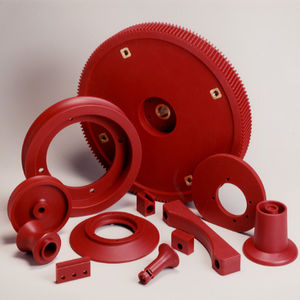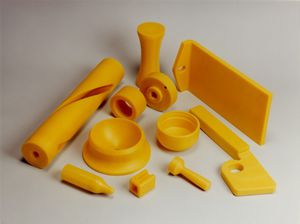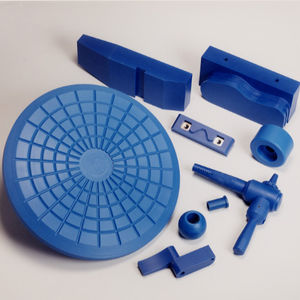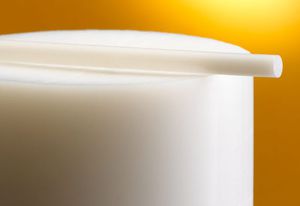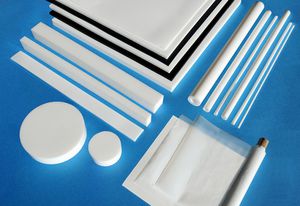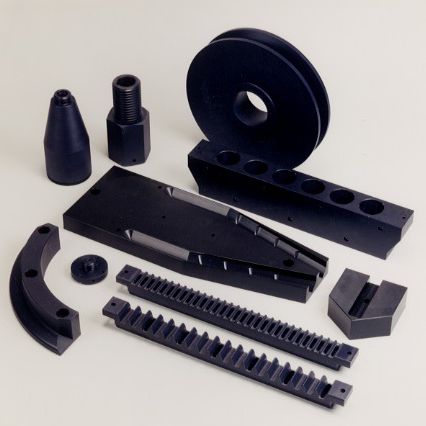
- Products
- Plate polyamide
- NYLACAST
Rod polyamide Nylacast Molyplatetube

Add to favorites
Compare this product
Characteristics
- Shape
- rod, plate, tube
Description
Nylacast Moly is a cast nylon material in which improved
crystallisation occurs by the addition of Molybdenum
Disulphide. On account of this the superficial hardness
increases (providing excellent machine ability) and
simultaneously the general mechanical and anti-friction
properties are improved. Due to the fact that the crystal
structure breaks down immediately before the melting
temperature is reached, the thermal properties of the
material are improved over the basic grade.
MoS2 provides a degree of self lubrication leading to
an improvement in the wear properties of the material.
These improved properties, combined with lower
water absorption, extend the range of applications that
Moly has over Natural cast nylon. Dynamic bearing
applications at elevated operating temperatures of up to
105ºC are particularly suited to this material.
BENEFITS OF NYLACAST MOLY
• Increased superficial hardness provides excellent
machine ability
• Improvement in wear properties as a result of dry lubricant
• Improved anti-friction properties
• Improved mechanical properties
• Elevated operating temperatures
• Lower water absorption
• Improved dimensional stability
• Excellent chemical resistance properties
• Good PV and load bearing capabilities
• Extended range of applications
INDUSTRY USERS
• Aerospace
• Cranes
• Railways
• Conveyors
• Ship building
• Offshore
• Food and drink packaging
• Agriculture
• Steel mills
• Waste Management
• Quarrying and mining
• Construction
TYPICAL APPLICATIONS
• Sheaves
• Wear pads
• Rollers
• Bearings
• Spacers
• Bush
• Slide pads
• Chain Wheel
• Chain sheaves
• Hose Clamp
• Wear strips
• Wear plates
• Spacer
• Bespoke Components
Catalogs
NYLACAST MOLY
1 Pages
materials_brochur
20 Pages
*Prices are pre-tax. They exclude delivery charges and customs duties and do not include additional charges for installation or activation options. Prices are indicative only and may vary by country, with changes to the cost of raw materials and exchange rates.






